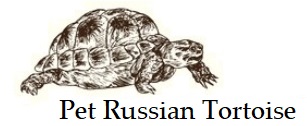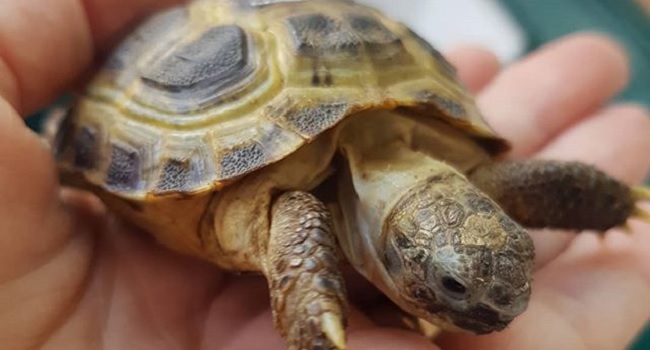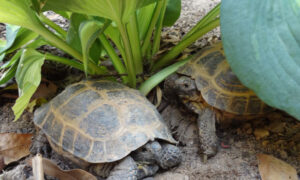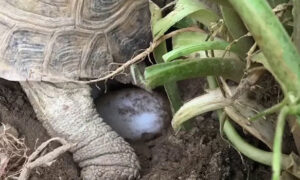Russian tortoises are cute but not cuddly. They either tolerate being picked up and handled or they don’t. Over time, most tortoises will get used to being picked up and handled. However you want to keep handling to a minimum and ensure that when you do hold a Russian tortoise, you are careful.
Handling a Baby Russian Tortoise
Baby Russian tortoises are tiny. Depending on how young, the baby may be as small as 1 inch. You can easily hurt a baby Russian tortoise, so the best way to hold a baby Russian tortoise is to gently pick up the baby tortoise with your thumb and index finger.
The baby tortoise will most likely feel more secure if his belly is on the palm of your hand. But, always keep the tortoise restrained. Don’t let him fall off your hand. A fall, even a short one, can easily break a baby tortoise’s shell or break a limb. And falling from higher heights, the tortoise could die.
Handling an Adult Russian Tortoise
Adult Russian tortoises are less dainty and less fragile. Although you can still hurt the tortoise, which is why it is just as important to carefully hold a bigger tortoise. Pick up the tortoise on either side of the shell. For more stability, pick up and carry the Russian tortoise with a hand on each side of the shell, in-between the front and back legs.
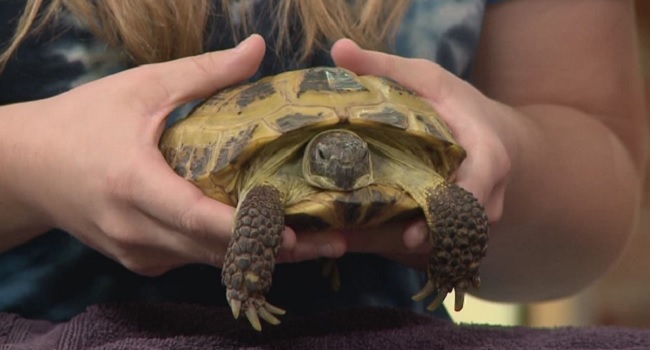
Regardless of whether you’re handling a juvenile or adult Russian tortoise, place the tortoise’s belly on the palm of your hand if you have to move around while holding the tortoise. This will help the tortoise feel more secure. Have the tortoise on the palm of one hand with your other hand on top to securely move the tortoise.
Shell Care and Health
When you first get your Russian tortoise, it may not be used to being handled. This is the most sensitive time. At first, the tortoise may suck in and hiss. The tortoise may try to kick and scratch. If you are not ready, the tortoise could surprise you and cause you to drop it or scratch it.
And because a Russian tortoise’s shell has nerves, the tortoise can feel every rub or scratch, which is why it is very important to be careful.
Be careful not to scratch the shell. Baby tortoises have softer shells, and sick tortoises can have a soft shell. Both babies and immuno-suppressed tortoises need to have extra precautions when handled. If you scratch the shell of a tortoise, it can become infected.
